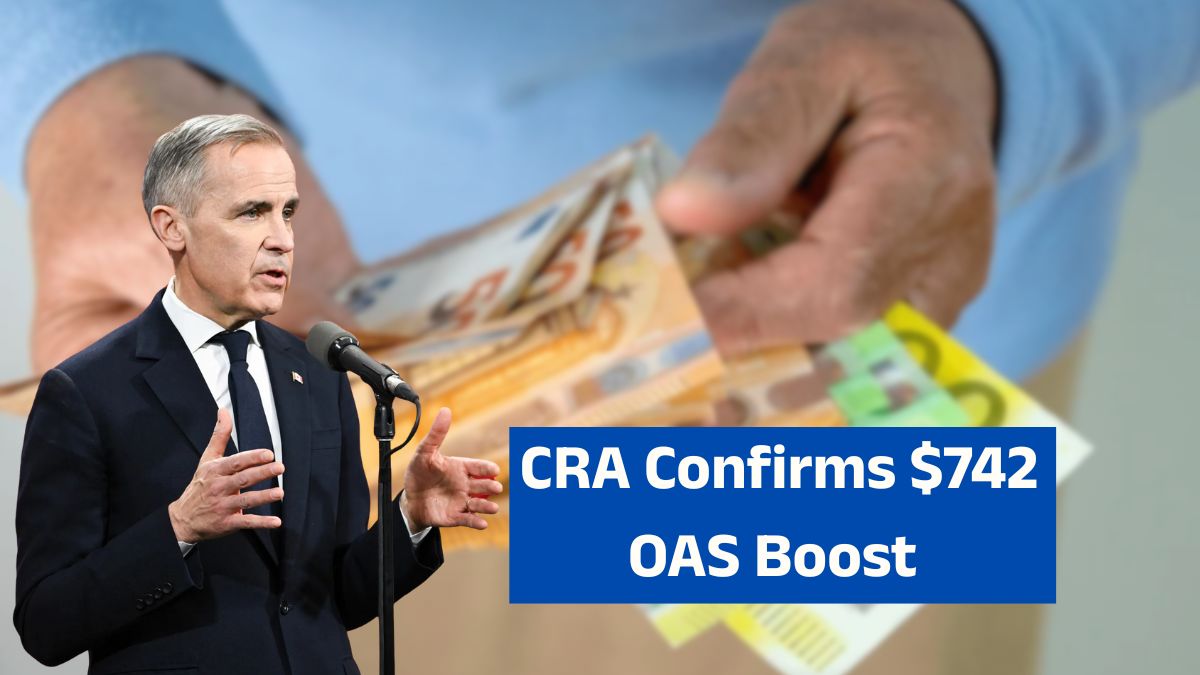If you’ve been keeping tabs on Canadian retirement benefits, you’ve likely seen the headline: “CRA confirms $742 OAS boost in 2025.” At first glance, it might sound like a bonus cheque from the government. But before seniors start planning a vacation or shopping spree, it’s important to understand what this really means.
The Old Age Security (OAS) boost is not a one-time lottery win. Instead, it’s part of the quarterly inflation adjustments that ensure pensions keep pace with the rising cost of living. With grocery bills, housing costs, and medical expenses climbing, this adjustment helps Canadian retirees maintain their standard of living.
What Is Old Age Security (OAS)?
The Old Age Security program is Canada’s largest and most universal public pension plan. Unlike the Canada Pension Plan (CPP), which depends on contributions from your working years, OAS is funded through general tax revenues.
- Basic age requirement: 65 or older.
- Residency rule: Must have lived in Canada at least 10 years after turning 18.
- Full OAS: Requires 40 years of Canadian residency.
- Partial OAS: Calculated based on actual years lived in Canada.
When OAS launched in 1952, payments were only $40 a month. Today, seniors aged 65–74 receive about $734.95/month, while those aged 75+ receive $808.45/month—a dramatic increase that reflects inflation and higher living costs.
The CRA Confirms $742 Boost – What’s Happening in 2025?
The much-talked-about $742 boost is not a lump-sum payout. It’s the annual impact of inflation-based adjustments spread out across monthly OAS cheques.
- Quarterly adjustments: Payments rise every 3 months if the Consumer Price Index (CPI) goes up.
- July–September 2025 rates:
- Ages 65–74 → $734.95/month
- Ages 75+ → $808.45/month
- Annual effect: Seniors will see roughly $742 more per year compared to 2024.
Example:
If you’re 75+ and receiving the maximum OAS, your monthly increase is around $60+. Over the course of 12 months, that totals about $742—enough to cover a couple of months of utility bills or several weeks of groceries.
A Historical Look at OAS Increases
To appreciate why the $742 boost matters, it helps to look back:
- 2010: OAS averaged $516/month.
- 2015: Increased to $564/month.
- 2020: Climbed to $613/month.
- 2022: Permanent 10% increase for seniors aged 75+, acknowledging higher living costs.
- 2025: OAS payments now reach $734.95 (65–74) and $808.45 (75+).
In just 15 years, OAS has risen by nearly $300/month—a crucial lifeline for seniors who depend on public pensions as their main source of income.
OAS vs. CPP vs. GIS – Clearing the Confusion
Seniors often mix up OAS with other retirement benefits. Here’s the breakdown:
- OAS (Old Age Security): Universal pension, based on age and residency.
- CPP (Canada Pension Plan): Earnings-based pension tied to work contributions.
- GIS (Guaranteed Income Supplement): A needs-tested top-up for low-income seniors already receiving OAS.
Together, these programs form Canada’s retirement safety net: OAS as the base, CPP as earnings-based income, and GIS as the cushion for those with the lowest means.
Who Qualifies for the $742 OAS Boost?
OAS is universal, but actual amounts depend on age, residency, and income.
- Age Requirements
- At 65, you start receiving OAS.
- At 75, you automatically receive an extra 10% top-up.
- Residency Requirements
- Minimum of 10 years in Canada after age 18.
- Maximum 40 years needed for full OAS.
- Recent immigrants often qualify for partial benefits.
- Income and the Clawback
- The OAS clawback starts at an income of $90,997 (2025 threshold).
- Payments are reduced at 15 cents for every dollar over that amount.
- Full clawback at $148,179.
Example:
If your income is $100,000, you are $9,003 above the threshold. That reduces your OAS by $1,350.45 annually.
OAS vs. U.S. Social Security – How They Compare
For Canadians with relatives in the U.S., comparisons are natural.
- U.S. Social Security: Contribution-based; no work = no benefits.
- Canadian OAS: Residency-based; almost all seniors qualify, regardless of work history.
- GIS vs. U.S. SSI (Supplemental Security Income): Both help low-income seniors, though Canada’s GIS is generally more generous.
This universality makes OAS unique, ensuring that nearly all seniors in Canada receive some level of support.
How to Check If You’ll Get the Boost
Seniors can easily confirm their OAS payments:
- Check your age group (65–74 or 75+).
- Review your residency to see if you qualify for full or partial OAS.
- Look at your income (line 23400 on your tax return shows your net world income).
- Log into My Service Canada Account (MSCA) to view OAS details.
- Compare your current payment with last year’s to calculate your boost.
Real-Life Examples of the OAS Boost
- Linda (77, Toronto)
- 2024 OAS: $747/month
- 2025 OAS: $808.45/month
- Annual boost = ~$742
- Mike (70, Vancouver)
- Income: $120,000/year
- OAS reduced by clawback
- His “boost” is smaller because of high earnings.
How This Boost Impacts Retirement Planning
An extra $742 annually might not sound huge, but for seniors on fixed incomes, it makes a difference.
- Budgeting: Covers essentials like groceries or medications.
- Tax planning: Since OAS is taxable, managing RRSP withdrawals helps avoid clawbacks.
- Deferral strategy: Delaying OAS until 70 increases payments by up to *36%
Tips to Maximize OAS Benefits
- Avoid clawbacks: Keep taxable income under $90,997.
- Income splitting: Share pension income with your spouse to lower taxes.
- Use TFSA withdrawals: Tax-free withdrawals don’t affect OAS eligibility.
- Stay informed: OAS rates adjust quarterly—always check the official government page.
Common Myths About OAS
- Myth 1: Everyone gets $742 extra. → False. It depends on age, residency, and income.
- Myth 2: It’s a one-time cheque. → Wrong. It’s spread out monthly.
- Myth 3: OAS payments can go down. → No. Payments only rise or stay the same, never decrease.
FAQs on CRA $742 OAS Boost in 2025
Q1: Is the $742 OAS boost a lump-sum payment?
A1: No. It’s the annual effect of higher monthly payments spread across the year.
Q2: Who qualifies for the full OAS boost?
A2: Canadians aged 75+ with full residency and income below the clawback threshold.
Q3: Will higher-income seniors still benefit?
A3: Yes, but the clawback reduces OAS for incomes above $90,997.
Q4: How do I check my OAS amount?
A4: Log into My Service Canada Account to view your monthly payment and eligibility.
Q5: Can OAS ever decrease if inflation drops?
A5: No. OAS payments never go down, even if inflation slows.







